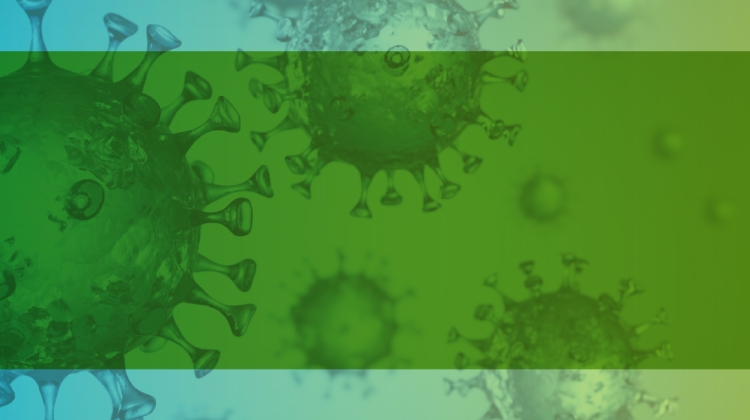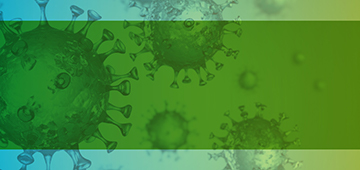Special Report: Pandemic Progress: Industry’s Journey From 2020 to Today

In 2020, the world was grappling with how to slow the spread of the SARS-CoV-2 virus and appropriately treat people who had the COVID-19 infection without approved therapies or vaccines. In two years, there are multiple vaccines and treatments along with great knowledge about the virus—and about how the industry mobilized, partnered, and achieved tremendous strides in addressing the global pandemic.
Healthcare professionals were able to share information in real time about what courses of treatments seemed to work, the signs and symptoms people were experiencing, and what underlying health conditions contributed to a more severe COVID-19 infection. Similarly, the drug industry, through unique collaborations with competitors, worked in concert to supply the global market with vaccines and therapies. Unprecedented speed to market was achieved with drug companies working closely with health authorities to provide status of trial results and partnering with logistics companies to deliver vaccines, which required shipment at an extremely low temperature. Government entities worked together to create a priority for administration of vaccines, mask mandates, and social distancing to curb the spread of COVID-19.
Attacking the Virus
An enormous amount of literature and research has been conducted on coronaviruses because they cause the common cold in addition to the outbreaks of Severe Acute Respiratory Syndrome (SARS) and Middle Eastern Respiratory Syndrome (MERS), the other two novel coronavirus infections.1, 2, 3 The viral envelope of coronaviruses is composed of four major viral structural protein components: spike (S) protein, membrane (M) protein, nucleocapsid (N), and the envelope (E) protein.4 The M protein provides the virion envelope shape and is the most abundant constituent of coronaviruses; the main function of the N protein is to bind the viral RNA; and the E protein is a minor constituent of virions and is an integral membrane protein.4
The majority of the drug companies designed vaccines and therapies that targeted the S protein of the SARS-CoV-2 virus. The S protein is a type 1 transmembrane glycoprotein that is expressed on the surface of coronaviruses (CoV) and is responsible for receptor binding and virion entry into the cells.5 Minor differences in CoV S protein structure and function correlates with striking changes in CoV tropism (ability to infect different cell types) and virulence.5,6 Additionally, CoV S protein binds to its host receptor, angiotensin-converting enzyme 2 (ACE2), and fuses the host and viral membrane.7
To understand if detection methods, treatments, and vaccine efficiency were effective as new variants of SARS-CoV2 emerge, the US Department of Health and Human Services (HHS) created the SARS-CoV2 Interagency Group (SIG) composed of multiple federal agencies, including divisions of the National Institute of Health (NIH), the Centers for Disease Control and Prevention (CDC), and the Food and Drug Administration (FDA).8 The SIG developed a variant classification to monitor variants in the US and to raise awareness regarding evidence of increased transmissibility, if detection methods are not as effective, and if current countermeasures (i.e., vaccines and therapies) are not as effective.10 The World Health Organization (WHO) maintains a global dashboard to show confirmed COVID-19 cases, deaths, public health and social measures (PHSM); technical guidance, vaccines, treatments, and tests; and research and response.9 Health authorities’ websites around the world have information about the COVID-19 pandemic, such as the European Medicines Agency (EMA), Health Canada, and the Brazilian Health Regulatory Agency (ANVISA), to access information such as approved countermeasures.
| WHO Label | Variant of Concern (VOC) |
Variant of Interest (VOI) |
Variants Being Monitored (VBM) |
|---|---|---|---|
| Alpha | Dec 29, 2020 | Sept 21, 2021 | |
| Beta | Dec 29, 2020 | Sept 21, 2021 | |
| Gamma | Dec 29, 2020 | Sept 21, 2021 | |
| Delta & Omicron | VOC | ||
| Epsilon | Mar 19, 2021 | Feb 26, 2021 | Sept 21, 2021 |
| Eta | Feb 26, 2021 | Sept 21, 2021 | |
| Iota | Feb 26, 2021 | Sept 21, 2021 | |
| Kappa | May 7, 2021 | Sept 21, 2021 | |
| N/A (B.1.617.3) | May 7, 2021 | Sept 21, 2021 | |
| Zeta | Feb 26, 2021 | Sept 21, 2021 | |
| Mu | Sept 21, 2021 |
Source: CDC, December 2021
At the time of this writing, there are currently only SARS-CoV2 variants being monitored (VBM), variants of interests (VOI), and variants of concern (VOC), but there are no variants of high concern (VOHC) (see Table 1). A VOHC designation means that prevention measures or medical countermeasures have clear evidence of significantly reduced effectiveness relative to the circulating variants of SARS-CoV2.10 Specifically, the use of rapid virus genomic sequencing data with phenotypic data allows evaluation of the effectiveness of COVID-19 tests, treatments, and vaccines approved or authorized for use in the US against the emerging variants.11 The CDC provides weekly estimates of proportions of circulating variants to permit timely public health action via Nowcast.11
At first, health care providers treated COVID-19 patients based on their symptoms prior to having approved therapies and vaccines. In order to ensure COVID-19 therapies and vaccines were available to the world population in a timely manner, health authorities used conditional approval, such as the FDA’s Emergency Use Authorization (EUA), which grants the FDA the authority to protect public health against “chemical, biological, radiological, and nuclear (CBRN) threats including infectious diseases, by facilitating the availability and use of medical countermeasures (MCMs) needed during public health emergencies.”12
The First Vaccines
The mRNA (messenger ribonucleic acid) vaccines received conditional approval and then gained full approval by the FDA. mRNA are single-stranded molecules that instruct human bodies to make proteins. mRNA vaccines contain three main types of ingredients: mRNA, lipids, and salts and sugars.13 The mRNA used in both the Comirnaty (BNT162b2) vaccine manufactured by Pfizer, Inc. and BioNtech and the Spikevax (mRNA-1273) vaccine manufactured by ModernaTX, Inc., is a modified nucleoside mRNA encoding the S protein of SARS-CoV-2. This instructs the body to assemble a harmless piece of protein from the virus that causes COVID-19.13 The protein that is produced activates the immune system to recognize COVID-19 infection in the future. In general, the lipids (fat) work in concert to enable mRNA entry into cells and the salts and sugars help ensure vaccine stability while the vaccine is manufactured, frozen, shipped, and stored until administered.13
The Next Vaccines
Viral-vector-based vaccines, such as the Janssen Pharmaceuticals Companies of Johnson & Johnson COVID-19 vaccine (JNJ-78436735), are composed of viral vector, and sugars, salts, acid, and acid stabilizers.13 A recombinant, replication-incompetent Ad26 (adenovirus) vector that encodes a stabilized variant of the SARS-CoV-2 S protein instructs the body to build a harmless piece of protein from the virus that causes COVID-19.13 Similar to the mRNA vaccines, the sugars, salts, acid, and acid stabilizers in viral-vector-based vaccines help ensure vaccine stability while the vaccine is manufactured, shipped, and stored until administered.13
As of 23 February 2022, Sanofi and GSK are seeking regulatory approval, including with both the FDA and the EMA, of their protein-based COVID-19 vaccine.14 The Sanofi and GSK COVID-19 vaccine is composed of 10 μg antigen formulation of SARS-CoV-2 adjuvanted recombinant protein-based vac-cine + GSK’s AS03.14 As with the mRNA and viral-vector-based COVID-19 vaccines, the protein-based COVID-19 vaccines tell the body to produce an immune response against SARS-CoV-2 S protein and fight a COVID-19 infection.15
Misunderstandings About Vaccines
There has been confusion and misunderstanding around how vaccines function, specifically, why the COVID-19 vaccines do not prevent infection in vaccinated people. Essentially, vaccines provide the body with a “memory” to recognize a virus that the body has been vaccinated against to mount an immune response to fight the virus in the future. None of the approved mRNA or viral-vector-based COVID-19 vaccines claim to have 100% effectiveness in preventing COVID-19 infection. However, COVID-19 vaccinations have been shown to reduce the severity of infection.
Another point of misunderstanding and misinformation revolved around the adverse events or side effects after a COVID-19 vaccine. The most common adverse events from vaccines, not just COVID-19 vaccines, are injection site reactions: pain, redness, and swelling. Because the purpose of a vaccination is to elicit an immune response to a viral infection, one may experience side effects such as fever, chills, and aches as the body is building immunity against SARS-CoV-2. These adverse events are not long-lasting and will subside. As with any medicinal product, a very small percentage of people can have an anaphylactic, or an allergic, reaction, but this is rare. Additional, very rare events after COVID-19 vaccinations include thrombosis with thrombocytopenia myocarditis and pericarditis, and Guillain-Barré syndrome.16
Alternate Therapies
With the start of the global pandemic, health care providers were treating COVID-19 infected patients based on their symptoms. Early in the pandemic, there was news discussing the use of convalescent plasma. Convalescent plasma is obtained from donors who have recovered from COVID-19, and the plasma may contain antibodies to SARS-COV-2 that could suppress the virus and elicit an inflammatory response. In February 2021, the FDA revised the EUA for convalescent plasma to limit authorization to only high-titer COVID-19 convalescent plasma and only to treat hospitalized patients with COVID-19 early in disease course or in patients hospitalized with impaired humoral immunity.17 High-titer and low-titer plasma refer to the number of antibodies present in a person’s plasma against COVID-19. Convalescent plasma, also known as serum therapy, goes back about 130 years and has been used as a first course of treatment when there is an epidemic or pandemic, according to Dr. Josh Sharfstein, Vice Dean for Public Health Practice and Community Engagement at Johns Hopkins.18
Front-line workers and health care professionals sought other types of therapies to help patients with COVID-19 at the start of the pandemic. Immunomodulators were investigated to see if these types of products would be effective against COVID-19 infections and the list of immunomodulators that the COVID-19 Treatment Guidelines Panel recommends is a noticeably short list compared to the list of immunomodulators not recommended for the treatment of COVID-19.19 Anti-viral medications, such as HIV protease inhibitors, hydroxychloroquine, and chloroquine and/or azithromycin, were evaluated, but the COVID-19 Treatment Guidelines Panel recommends against the use of these to treat COVID-19.20 Ivermectin is an FDA-approved antiparasitic product used to treat several tropical diseases, such as scabies, onchocerciasis, and helminthiases, but is not approved to treat viral infections.21 There are mixed results pertaining to the use of ivermectin and COVID-19 treatment: some reports showing no benefits or worsening of dis-ease after ivermectin use and others showing greater reduction in inflammatory markers, shorter time to viral clearance, or lower mortality rates in patients who received ivermectin than in patients who received similar drugs or placebo.21 The COVID-19 Treatment Guidelines Panel stated there was insufficient data to recommend for or against use of ivermectin for COVID-19 infection.20
Remdesivir is an FDA-approved COVID-19 nucleotide prodrug that is administered intravenously in a hospital or health care setting and its mechanism of action is to bind to viral RNA-dependent RNA polymerase and inhibit viral replication through premature termination of RNA transcription.20
Monoclonal antibody (mAb) treatments against SARS-CoV-2 have received EUA from the FDA, such as ritonavir-boosted nirmatrelvir (Paxlovid) and molnupiravir.20 The COVID-19 Treatment Guidelines Panel’s recommendation in order of preference for treating non-hospitalized patients with COVID-19 follows: ritonavir-boosted nirmatrelvir (Paxlovid), sotrovimab, remdesivir, and molnupiravir. Hospitalized patients with COVID-19 infections are recommended to receive remdesivir with or without immunomodulators based on the patients’ conditions.20
Conclusion
We all hope that the world continues to collaborate with universities, institutes, and competitor companies to deliver life-saving medicines to the global population. With the pandemic, we have all seen the importance of educating the world on drug products, how they work, and potential side effects so that people can make health-based decisions with information that is easily understood regardless of education background or the field one works in. Our goal in the pharmaceutical industry is to be in the business of improving people’s quality of life.
Special Report: Operation Warp Speed: A View From the Inside

Operation Warp Speed coordinated US government support of the pharmaceutical industry’s effort to develop and deliver vaccines and therapeutics across the United States to fight the COVID-19 pandemic. This article provides an inside look at the work done by this team to address the threat posed by COVID-19.




